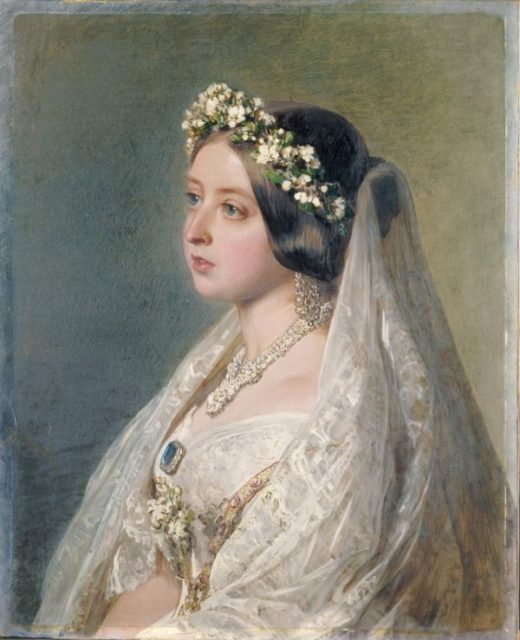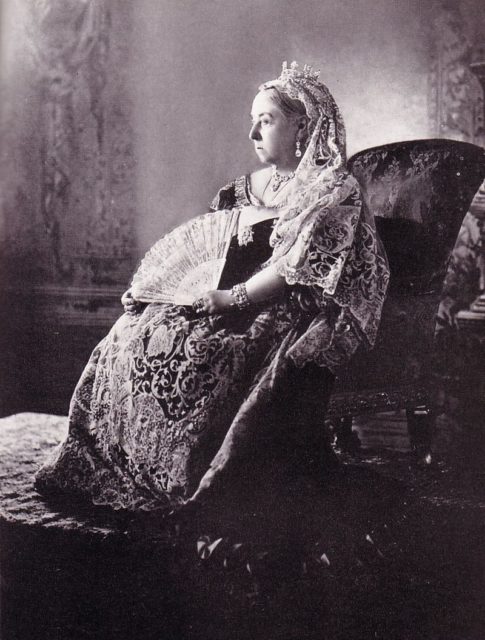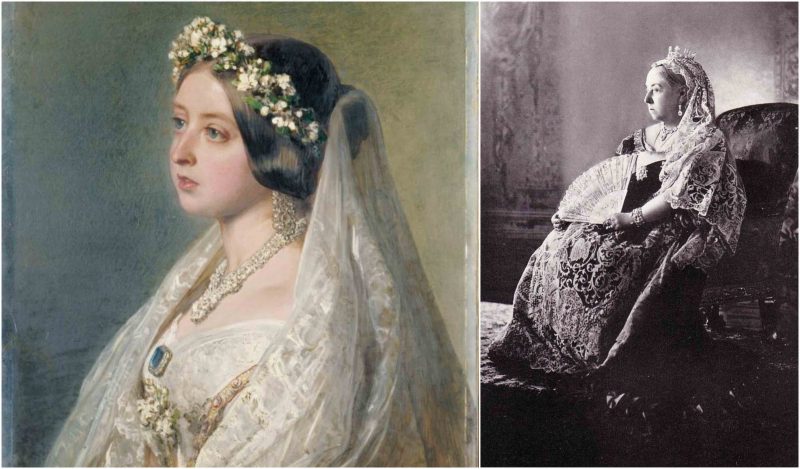Queen Victoria, at her wedding to Prince Albert of Saxe-Coburg and Gotha on 10 February 1840, selected a white dress, an unusual choice at a time when colors were more usual, made from heavy silk satin.
The Honiton lace used for her wedding dress proved an important boost to Devon lace-making. Queen Victoria has been credited with starting the tradition of white weddings and white bridal gowns, although she was not the first royal to be married in white.

The plain, cream-coloured satin gown was made from fabric woven in Spitalfields, east London, and trimmed with a deep flounce and trimmings of lace hand-made in Honiton and Beer, in Devon. This demonstrated support for English industry, particularly the cottage industry for lace.

Queen Victoria described her choice of dress in her journal thus: “I wore a white satin dress, with a deep flounce of Honiton lace, an imitation of an old design. My jewels were my Turkish diamond necklace & earrings & dear Albert’s beautiful sapphire brooch.”

The handmade lace motifs were appliquéd onto cotton machine-made net. Orange flower blossoms, a symbol of fertility, also trimmed the dress and made up Victoria’s wreath, which she wore instead of a tiara over her veil. The veil, which matched the flounce of the dress, was four yards in length and 0.75 yards wide. The slippers she wore matched the white color of the dress. The train of the dress, carried by her bridesmaids, measured 18 feet (5.5 m) long.

Victoria revisited the lace-makers to create the christening gown worn by her children, including Albert Edward, the future Edward VII.
This gown was worn for the christening of all subsequent Royal babies until the baptism of James, Viscount Severn in 2008, when a replica was used for the first time. As a mark of support for the Honiton industry, in addition to often wearing their lace on her and her children’s clothes, Victoria insisted her daughters also order Honiton lace for their wedding dresses.
Victoria also wore her wedding lace mounted on the dresses she wore to the christenings of her nine children (except for Albert Edward’s, for which she wore her Garter robes), and to the marriages of two of her children, her eldest daughter, Victoria’s, in 1858, and her youngest son, Leopold’s, in 1882. Her youngest daughter, Princess Beatrice, was permitted to wear it as part of her wedding gown in 1885.
Victoria also wore the lace to the wedding of her grandson George (the future George V) to Mary of Teck in 1893,and for her Diamond Jubilee official photograph in 1897. When Victoria died, she was buried with her wedding veil over her face. In 2012 it was reported that while the dress itself had been conserved and displayed at Kensington Palace that year, the lace was now too fragile to move from storage
